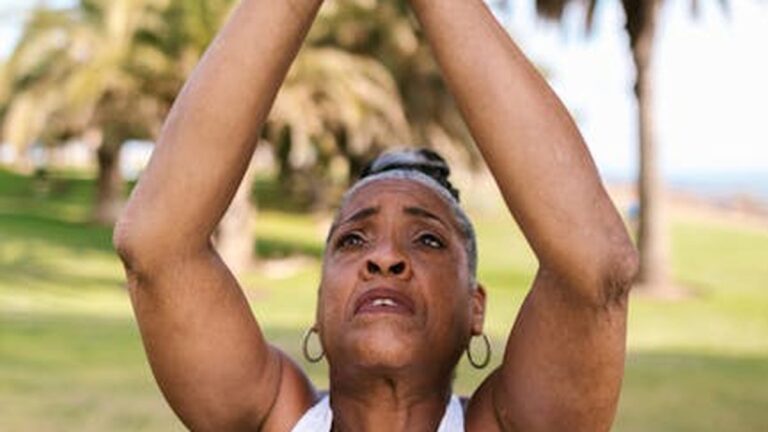Body Composition: Beyond the Scale
Why Weight Isn’t the Whole Story
We’ve all been there: stepping on the scale, holding our breath, and bracing for the number. But what if that number isn’t telling the whole story? What if focusing solely on weight is actually hindering your journey toward sustainable fitness and overall health? The truth is, weight is just one piece of the puzzle. A much more insightful metric is body composition, which breaks down your weight into its constituent parts, primarily muscle mass and body fat percentage. Understanding body composition allows you to move beyond arbitrary numbers and focus on building a healthier, stronger, and more resilient you.
What is Body Composition?
Body composition refers to the proportion of fat, muscle, bone, and water in your body. It provides a more comprehensive picture of your health than weight alone. Two people can weigh the same but have vastly different body compositions. One person might have a higher percentage of muscle mass and a lower body fat percentage, indicating a healthier physique, while the other might have the opposite. This difference significantly impacts their metabolism, energy levels, and overall well-being.
The Importance of Muscle Mass
Muscle mass is crucial for several reasons:
- Metabolism: Muscle tissue burns more calories at rest than fat tissue. This means that increasing your muscle mass can boost your metabolism and help you burn more calories throughout the day, even when you’re not exercising.
- Strength and Functionality: Stronger muscles improve your physical performance, making everyday activities easier and reducing the risk of injuries.
- Bone Density: Resistance training, which builds muscle, also helps increase bone density, reducing the risk of osteoporosis later in life.
- Improved Insulin Sensitivity: Muscle helps regulate blood sugar levels, improving insulin sensitivity and reducing the risk of type 2 diabetes.
Understanding Body Fat Percentage
Body fat percentage is the proportion of your body weight that is made up of fat. While some body fat is essential for hormone production, insulation, and energy storage, excess body fat can lead to various health problems, including heart disease, type 2 diabetes, and certain types of cancer.
Healthy body fat percentage ranges vary depending on age, sex, and activity level. Generally, a healthy range for men is between 8% and 24%, while for women, it’s between 21% and 35%. However, it’s essential to consult with a healthcare professional to determine what’s healthy for you.
Methods of Body Composition Analysis
Several methods are available to assess body composition. Each method has its advantages and disadvantages in terms of accuracy, cost, and accessibility.
- Skinfold Calipers: This method involves measuring the thickness of skinfolds at specific sites on the body using calipers. It’s relatively inexpensive and accessible, but the accuracy depends on the skill of the person taking the measurements.
- Bioelectrical Impedance Analysis (BIA): BIA devices send a small electrical current through the body. The resistance to the current can be used to estimate body fat percentage. BIA is convenient and relatively affordable, but factors like hydration levels can affect accuracy.
- Dual-Energy X-ray Absorptiometry (DEXA): DEXA scans use low-dose X-rays to measure bone density, as well as body fat percentage and muscle mass. DEXA is considered one of the most accurate methods but is more expensive and less accessible than other options.
- Hydrostatic Weighing (Underwater Weighing): This method involves being submerged in water and measuring your body’s density. It’s accurate but requires specialized equipment and is not suitable for everyone.
- Air Displacement Plethysmography (Bod Pod): The Bod Pod uses air displacement to measure body volume, which is then used to calculate body composition. It’s accurate and non-invasive but can be expensive.
Achieving Sustainable Fitness Through Body Composition
Instead of solely focusing on the number on the scale, shift your focus to improving your body composition. This involves building muscle mass and reducing body fat percentage through a combination of diet and exercise. This is the core of sustainable fitness.
Dietary Strategies for Body Composition
Nutrition plays a vital role in body composition. Here are some key dietary strategies:
- Prioritize Protein: Protein is essential for building and repairing muscle tissue. Aim for 0.8-1 gram of protein per pound of body weight per day. Good sources of protein include lean meats, poultry, fish, eggs, dairy products, beans, and lentils.
- Focus on Whole Foods: Choose whole, unprocessed foods over processed foods. This includes fruits, vegetables, whole grains, and lean proteins.
- Control Portion Sizes: Be mindful of portion sizes to avoid overeating. Use smaller plates and bowls, and pay attention to your hunger and fullness cues.
- Stay Hydrated: Drink plenty of water throughout the day to support overall health and metabolism.
- Limit Sugary Drinks and Processed Foods: These foods are often high in calories and low in nutrients, contributing to weight gain and poor body composition.
Exercise Strategies for Body Composition
Exercise is equally important for improving body composition. A combination of resistance training and cardiovascular exercise is ideal.
- Resistance Training: Lift weights or use resistance bands to build muscle mass. Focus on compound exercises that work multiple muscle groups simultaneously, such as squats, deadlifts, bench presses, and rows. Aim for 2-3 resistance training sessions per week.
- Cardiovascular Exercise: Engage in cardiovascular exercise to burn calories and improve cardiovascular health. Choose activities you enjoy, such as running, swimming, cycling, or dancing. Aim for at least 150 minutes of moderate-intensity or 75 minutes of vigorous-intensity cardiovascular exercise per week.
- High-Intensity Interval Training (HIIT): HIIT involves short bursts of intense exercise followed by periods of rest or low-intensity exercise. HIIT is effective for burning calories and improving cardiovascular fitness.
Case Study: Transforming Body Composition for Lasting Results
Consider Sarah, a 35-year-old woman who was frustrated with her weight loss efforts. She was constantly dieting but struggled to maintain her weight loss. After learning about body composition, she shifted her focus from simply losing weight to building muscle and reducing body fat percentage. She started incorporating resistance training into her routine twice a week and increased her protein intake. Over several months, Sarah lost inches, felt stronger and more energetic, and significantly improved her body composition. While the number on the scale didn’t change dramatically, her clothes fit better, and she felt more confident and healthy. This is a prime example of how focusing on body composition leads to more healthy weight loss and sustainable fitness.
The Long-Term Benefits of Focusing on Body Composition
Prioritizing body composition over weight provides numerous long-term benefits:
- Improved Metabolic Health: Higher muscle mass boosts metabolism and improves insulin sensitivity.
- Reduced Risk of Chronic Diseases: Lower body fat percentage reduces the risk of heart disease, type 2 diabetes, and certain cancers.
- Increased Energy Levels: Improved body composition leads to increased energy levels and reduced fatigue.
- Enhanced Physical Performance: Stronger muscles improve physical performance and reduce the risk of injuries.
- Improved Mental Well-being: Achieving a healthier body composition can boost self-esteem and improve overall mental well-being.
Conclusion: Embrace the Journey to a Healthier You
Stepping away from the scale and embracing the concept of body composition is a game-changer for achieving sustainable fitness and lasting health. By focusing on building muscle and reducing body fat percentage through a combination of diet and exercise, you can transform your body and improve your overall well-being. Remember, it’s not just about the number on the scale; it’s about feeling stronger, healthier, and more confident in your own skin. So, ditch the restrictive diets, embrace a balanced lifestyle, and embark on a journey toward a healthier and happier you. Understanding and optimizing your body composition is the key to unlocking your full potential and achieving true, sustainable fitness.
References
-
Harvard T.H. Chan School of Public Health Physical Activity
– Research-based physical activity recommendations. -
Centers for Disease Control and Prevention Physical Activity
– Government physical activity guidelines for all ages. -
American Heart Association Fitness
– Cardiovascular health and exercise recommendations.






